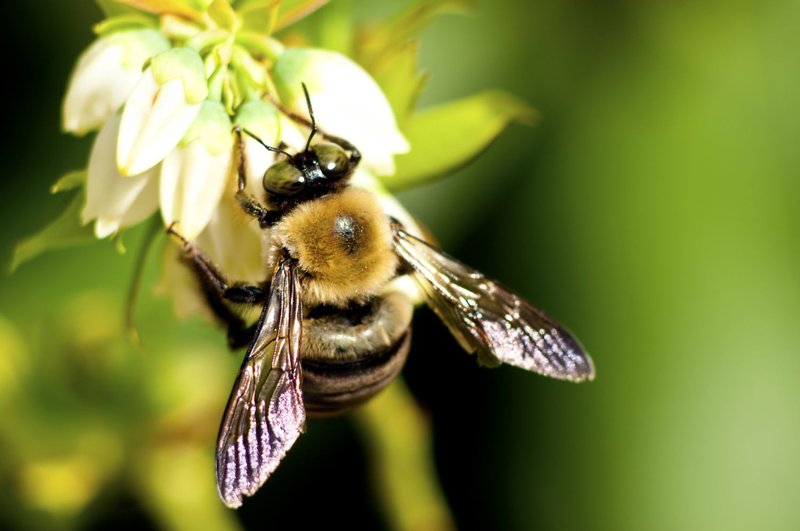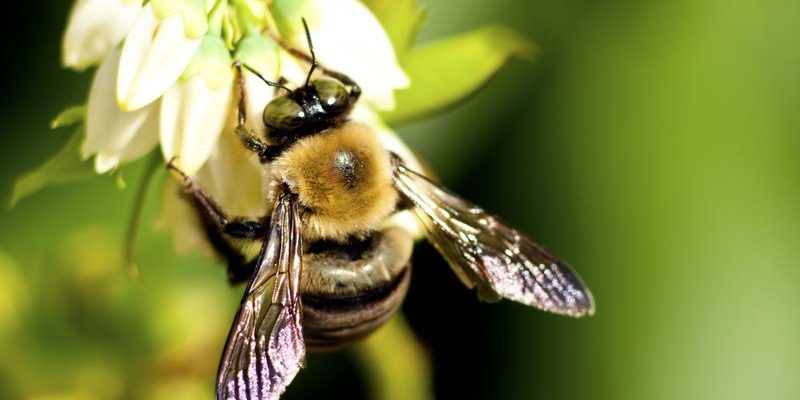
Understanding bees can feel a bit overwhelming, especially with so many types and species out there. But don’t worry; we’ll break it down together. You might be surprised to learn how advanced their social structures are, or just how many varieties exist. Grab your favorite drink, and let’s explore ten captivating facts about bees—this little world of buzzing wonder!
1. Bees Have Been Around for Millions of Years
Bees are not just a recent phenomenon; they have been buzzing around our planet for about 100 million years. That means they were here long before humans showed up! Imagine a time when dinosaurs roamed the earth, and bees were already busy pollinating flowers.
Fossils have shown that bees existed alongside some of the earliest flowers, and their relationship has evolved beautifully over time. This ancient partnership is one of nature’s greatest stories—plants providing nectar for bees in exchange for pollination. Without bees, many plants would struggle to reproduce, demonstrating just how connected we all are in this ecosystem.
2. There Are Over 20,000 Species of Bees
You might think of bees and picture honeybees buzzing around a hive, but there’s so much more diversity in the bee world. In fact, there are more than 20,000 different species of bees! From solitary bees like the carpenter bee to the social honeybee, each species has unique traits and behaviors.
Some bees, like the bumblebee, can even carry pollen on specialized hairs on their legs. Others, such as the mason bee, often make their nests in tiny cracks or holes rather than living in large colonies. Isn’t it fascinating how varied these creatures can be? It’s like meeting a whole bunch of unique personalities, each playing their part in nature.
3. Bees Communicate Through Dance
Bees have their own way of chatting, and it’s nothing like how we communicate. When a worker bee discovers a good source of nectar, she doesn’t just tell her friends about it—she dances! This dance is called the waggle dance.
The way she wags her body and moves in a figure-eight pattern communicates the direction and distance of the food source. It’s like a little bee GPS guiding her fellow bees to the feast. Watching this dance is a reminder of how intricate and intelligent these little creatures truly are.
4. Honey is Their Lifeblood
Honey is more than just a sweet treat; it’s a crucial food source for bees. They produce honey as a way to store energy for the winter months when flowers are scarce. When you think about it, honey is nature’s way of ensuring that these busy pollinators are well-fed and ready to work when spring rolls around.
To make honey, bees collect nectar from flowers and break it down into simpler sugars. Then, they store it in their hives and fan their wings to reduce moisture, creating that thick, syrupy goodness we all love. It’s a labor-intensive process—bees must visit about 2 million flowers to produce just one pound of honey!
5. They’re Essential for Our Food Supply
You might not realize this, but bees are vital to our food system. They pollinate roughly one-third of our food crops—that’s a significant chunk of what we eat! From almonds to blueberries, many fruits and vegetables depend on bees for pollination.
Without these pollinators, many of our favorite foods would become scarce and expensive. So, next time you enjoy a delicious apple or a vibrant salad, remember the bees that helped make it happen. They truly are the unsung heroes of our meals!
6. A Bee Can Only Sting Once
Bees are often portrayed as aggressive creatures, but that’s a bit of a misconception. Honeybees will sting only when they feel threatened, and here’s the kicker: they can only sting once. After stinging, their barbed stinger gets lodged in their target, which ultimately leads to their death.
This is why bees tend to be non-aggressive unless they feel their hive is in danger. So, if you see one buzzing near you, remember they’re just going about their business! Provide them some space, and they’ll likely leave you alone.
7. They Have a Unique Life Cycle
The life of a bee is quite fascinating and follows a specific cycle. It all starts when a queen bee lays eggs in the hive. Once the eggs hatch, they go through several stages: larva, pupa, and adult.
– Egg Stage: The queen lays hundreds of eggs daily in hexagonal wax cells.
– Larva Stage: When the eggs hatch, they turn into larvae, which are fed royal jelly by worker bees.
– Pupa Stage: After about a week, they become pupae, developing into adult bees.
This life cycle can take anywhere from a few weeks to several months, depending on the species and environmental factors. It’s incredible to think about how each bee plays a role through different stages of life.
8. Bees Can Recognize Human Faces
Here’s something mind-blowing: bees can actually recognize human faces! Research shows that these little creatures can learn and remember individual human features and their associations, similar to how we do. Isn’t that wild?
This skill helps them differentiate between flowers and navigate their environment. So, while they might not hold a grudge against you for stepping too close, they have a strong memory for what they find appealing. If only we could understand what catches their eye!
9. They Play a Role in Biodiversity
Bees are like the glue in our ecosystems, connecting various plant species and helping to maintain biodiversity. When they pollinate flowers, they help create a diverse range of plants, which benefits wildlife, other insects, and even humans.
When bees thrive, entire ecosystems flourish. That’s why protecting bee populations is so important. If they decline, we risk losing not only our food supply but also the beautiful diversity of plants that supports life on Earth.
10. Bees are Facing Many Threats
Sadly, bees are in trouble. Factors such as pesticides, habitat loss, climate change, and diseases are threatening their populations. Many species are declining at alarming rates, which poses a risk to our food systems and ecosystems as a whole.
But there’s hope! You can help support bees by planting bee-friendly flowers, avoiding harmful pesticides, and creating habitats where they can thrive. Every little effort counts, and we can all play a part in protecting these vital pollinators.
As we’ve learned, bees are not only fascinating but also crucial to our environment and food supply. Let’s cherish and protect them so they can continue to buzz through our lives for generations to come!

